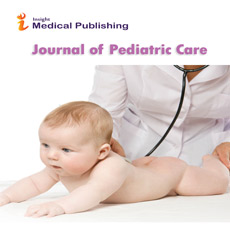Perinatal Asphyxia and Its Associated Factors among Live Births in the Public Health Facilities of Bahir Dar city, Northwest, Ethiopia, 2021.
Magarsa Lami
Abstract
Background: Birth asphyxia is a serious clinical problem of newborn babies, which occurs due to impaired blood-gas exchange and results in hypoxemia. Despite improvements in the diagnosis and management of perinatal asphyxia, it has become the leading cause of admission and neonatal mortality, especially in developing countries.
Objective: The aim of this study was to assess factors associated with perinatal asphyxia among live births in the public health facilities of Bahir Dar city, Northwest Ethiopia, 2021.
Method: Health facility-based cross-sectional study was employed from April 1-30/2021 in the public health facilities of Bahir Dar city among 517 mothers-newborn pairs. The data were collected by systematic random sampling technique, entered by using Epi data 3.1, and analyzed using SPSS 25.0 version. Bivariate and multivariate logistic regression analyses were employed to estimate the crude and adjusted odds ratio with a confidence interval of 95% and a P-value of less than 0.05 considered statistically significant. Frequency tables, figures, and descriptive summaries were used to describe the study variables.
Result: In this study, 21.7% (95% CI: 18.2% – 25.5%) of the newborns had perinatal asphyxia. Mal-presentation [AOR=4.06, 95% CI= 2.08-7.94], uterotonics drug administration [AOR= 2.78, 95% CI=1.67- 4.62], meconium-stained amniotic fluid [AOR=4.55, 95% CI=2.66, 7.80], night time delivery [AOR=1.91, 95% CI=1.17, 3.13] and preterm delivery [AOR=3.96, 95% CI=1.98, 7.89] were significantly associated with perinatal asphyxia.
Conclusion and Recommendation: In the present study, the proportion of perinatal asphyxia was high. Fetal mal-presentation, uterotonics drug administrations, meconium-stained amniotic fluid, delivery at night time, and preterm delivery were significantly associated with perinatal asphyxia. To mitigate this problem, there is a need to focus on early identification of the risk factors like fetal mal-presentation, preterm labor/delivery, and managing them appropriately. Administering of uterotonics drugs should be based on indication with close supervision.
Keywords: Asphyxia; Bahir Dar University; Determinant factors; Ethiopia; Perinatal.
Open Access Journals
- Aquaculture & Veterinary Science
- Chemistry & Chemical Sciences
- Clinical Sciences
- Engineering
- General Science
- Genetics & Molecular Biology
- Health Care & Nursing
- Immunology & Microbiology
- Materials Science
- Mathematics & Physics
- Medical Sciences
- Neurology & Psychiatry
- Oncology & Cancer Science
- Pharmaceutical Sciences
